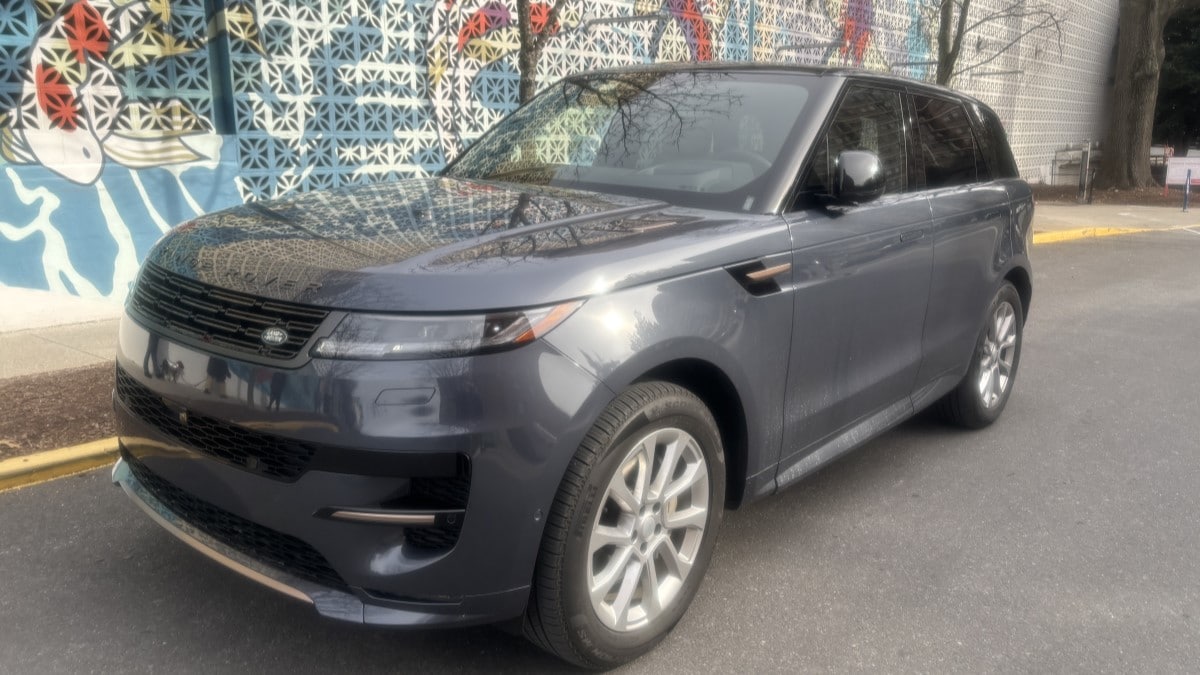Automotive writers are, generally, people who fell in love with cars at a young age. Love makes people irrational.
We work to unlearn our biases, but we have them as much as anyone else does. Editors and rating systems help keep us honest, and we set aside our preferences to put ourselves in the shoes of someone shopping for the sort of car we’re testing.
But I’ll confess it: My biggest automotive bias concerns Range Rovers. As a child, inhaling every car magazine my father subscribed to, I concluded that Range Rovers were the world’s coolest design objects.
As an adult, my heart broke the first time I tested one. I hated their suspensions beyond all reason. I’ve driven many now and come to understand that their softness has a purpose and it’s why some buyers seek them out religiously. But I have never gotten over my disappointment at the spongy ride of a Range Rover.
Until the assignment arrived to test drive the 2025 Range Rover Sport. At long last, the Rover stiff enough for me.
The Range Rover Sport has many virtues and drawbacks that should lead you to take a test drive — if you’re in the market — and make your own sober assessment of whether this is the luxury SUV for you. But, for me, it arrived with a sense of redemption.
The Sport competes in one of the most evenly balanced automotive classes. There are so many excellent luxury midsize SUVs that a solidly average entry is a delightful car you’d enjoy owning. This isn’t the best of them. Its price, as we’ll discuss, keeps it from that title. But it’s near the top of an exquisite class.
My test model was the midlevel SE Dynamic model with the P400 mild hybrid drivetrain in Varesine Blue with a tasteful Caraway/Ebony interior and the Cold Climate Package. It retails for $93,585 after a $1,625 delivery fee.
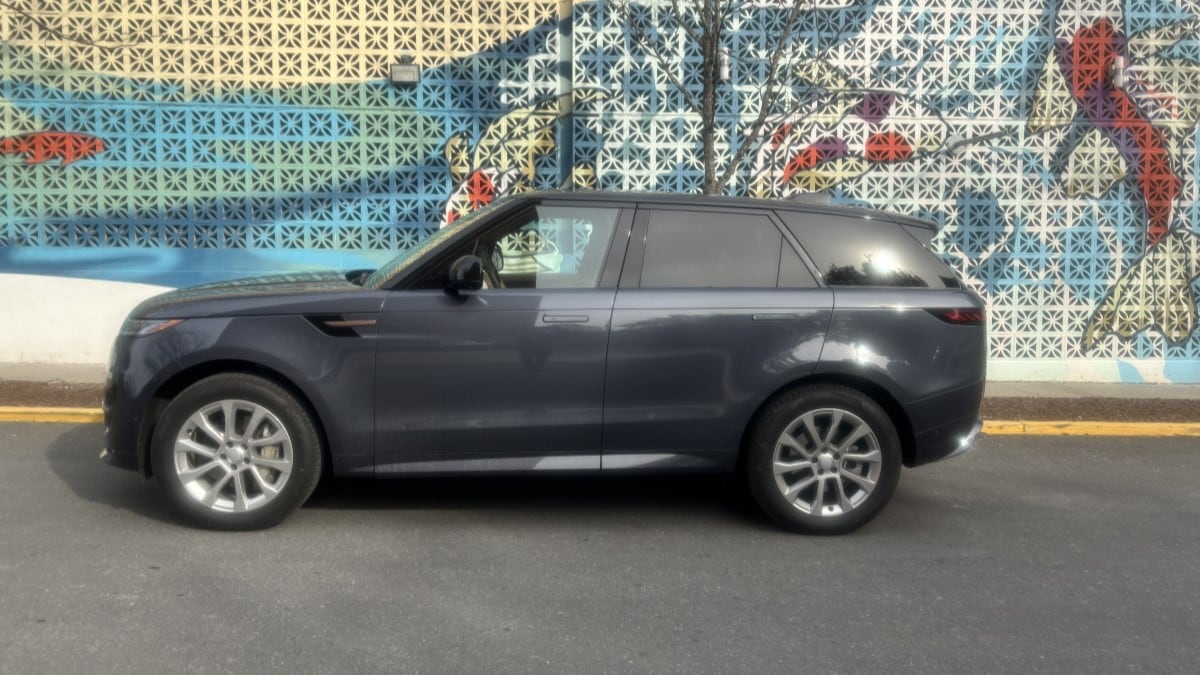
Elegant Inside and Out
Despite its name, the Range Rover Sport isn’t covered in aerodynamic bits and vents. Designers brought a lot of restraint to their task.
It bears an obvious family resemblance to the flagship Range Rover but with svelte lines that make it look like the runner in the family. Thin LED headlights, in recent years, have given many luxury SUVs a more aggressive mien. That trick works particularly well on the Rover design language.
That same tasteful hand works inside, where the cabin is both minimalist and lush.
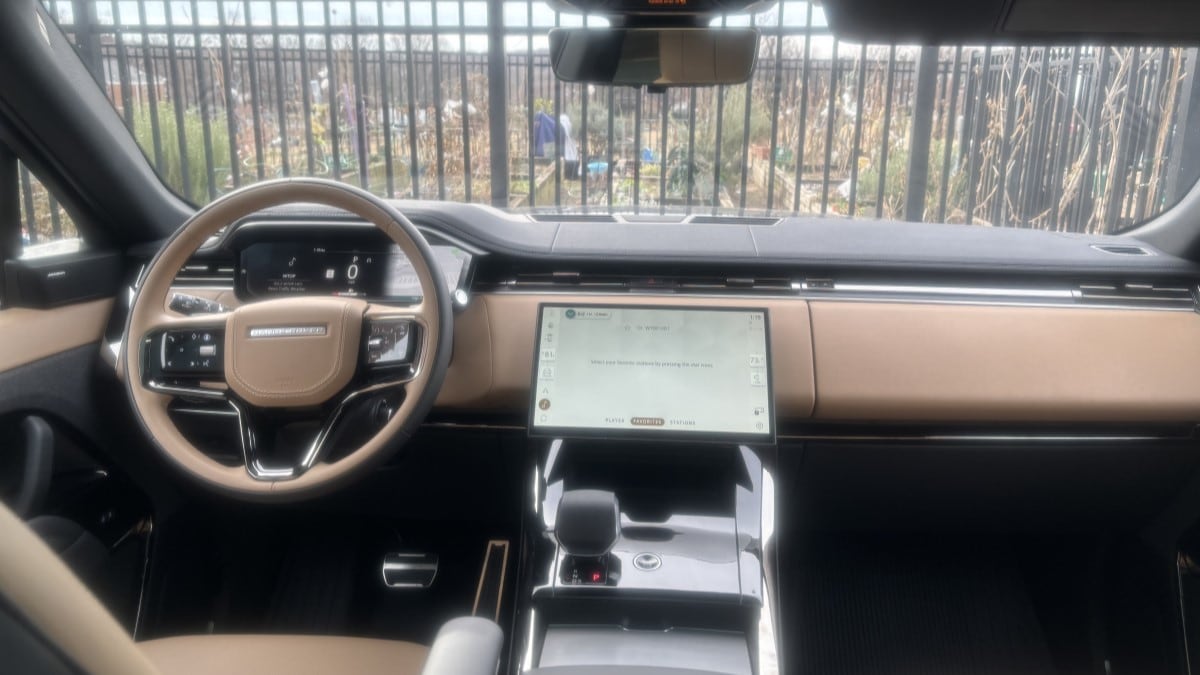
Lushness comes from Windsor leather, which is nearly everywhere. It’s on the perforated, heated, and ventilated seats, of course, but a huge expanse of it lines the dashboard. While some competitors go for busy, intricate dashboard looks, Rover simply invites you to enjoy an elegant material.
The door cards provide a break from the hides, with a unique wool-look material that offers nice contrast.
Minimalism comes from an almost Tesla-simple control layout. Nearly everything adjustable runs through a nearly curved central touchscreen. You’ll love or hate this approach. I found it lovely with the car off and disappointing, at times, on the road. A simple volume knob shouldn’t be too much to ask.
Solid haptic thumps from the touchscreen help you operate it with your eyes on the road. But I’d rather have user-friendly separate controls for climate and entertainment.
Piano black trim looks nice from the factory, but we’ve found it challenging to keep it scratch-free over a long period of ownership.
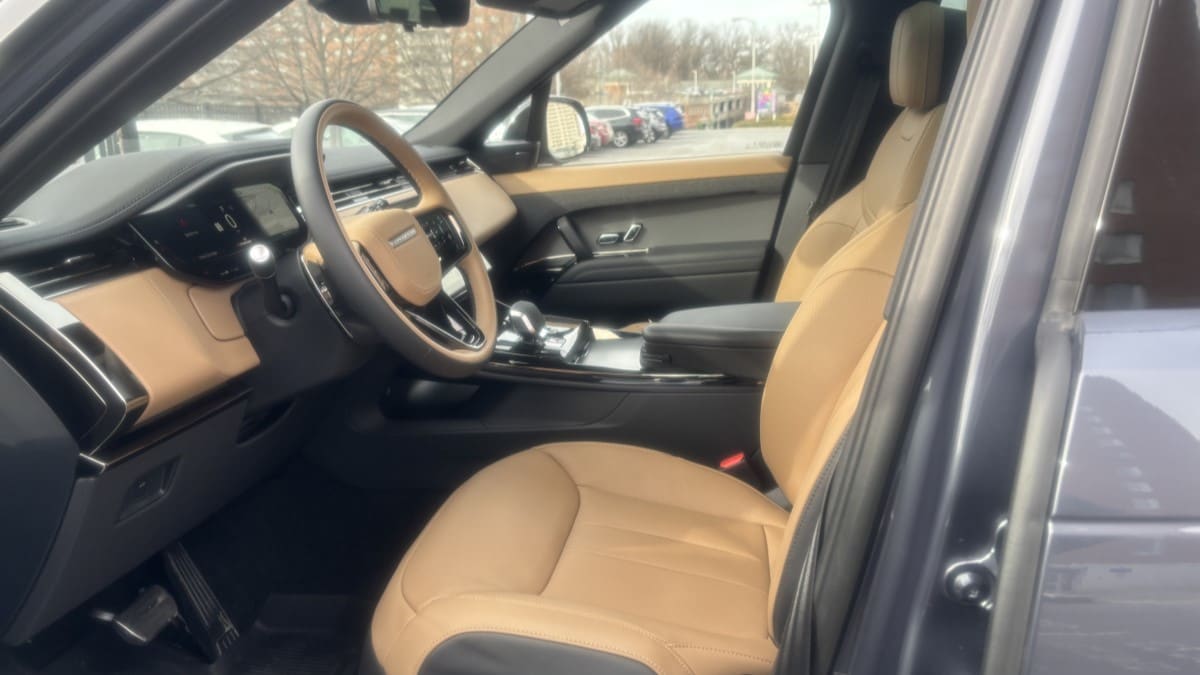
Firm Suspension, Confident in Foul Weather
The Range Rover Sport’s best feature is the adjustable air spring suspension system. Rovers can be so soft they feel wallowy, which helps them cross deserts and jungles worldwide but makes them squishy by American tastes. That problem, decades old, is simply gone here. Every setting is comfortable.
I had the Rover during an unusually heavy mid-Atlantic snowstorm and took it out on unplowed roads early in the morning as a test. It handled ice and snow with astonishing ease. Height changes between Access, Normal, and Off-Road modes felt significant.
My test model had a turbocharged inline-6-cylinder engine making 395 horsepower. Range Rover says it will carry the big SUV from zero to 60 mph in just 5.4 seconds. In foul weather my whole week with it, I never got the chance to find out. I did find the engine confident. Those who want something truly sporty have the option of a 626-hp twin-turbo V8 in the SV edition, but it costs nearly twice what my test model did.
Dynamic mode tightened steering ratios enough to make me want to test it on the track.
A plug-in hybrid variant is available for those who want better fuel economy. This setup gets just 20 mpg in city driving, which would get expensive over years of ownership.
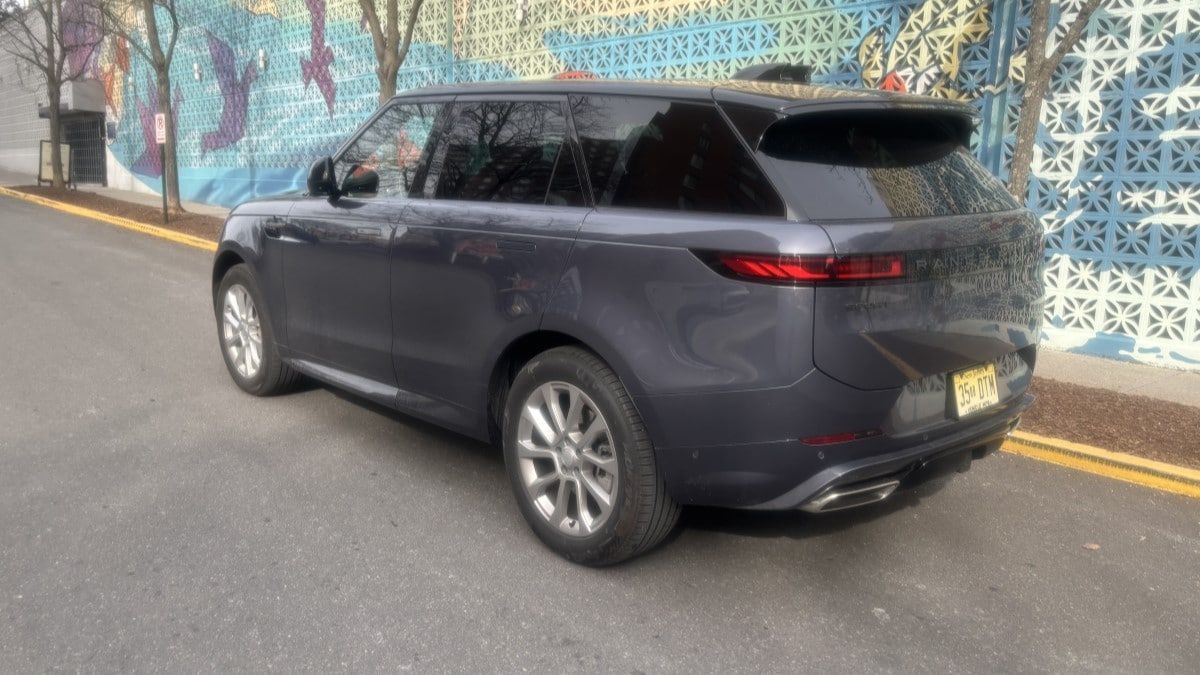
Its Biggest Drawback Is Its Price
The Range Rover Sport is lovely, with an elegant but muscular stance, a tasteful cabin, and an astonishingly sure-footed grip. It’s undeniably quick and has fast reflexes for such a big vehicle.
So what is there to complain about? I’m not sure that the $93,000-plus price tag is justified when a BMX X5 offers similar virtues starting in the mid-$60,000 range. Even a base Porsche Cayenne costs less. If you’re looking at a Rover for its off-road prowess, a Lexus GX will go anywhere this will for at least $20,000 less in similar luxury.
But some buyers want a Rover. They likely fell in love with the idea of a Range Rover long before they could drive. That was me once. If that’s you now, and you’ve reached a point in life where the expenditure is realistic, the Sport is the one to have.
